
How to Use RTC DS1307: Examples, Pinouts, and Specs
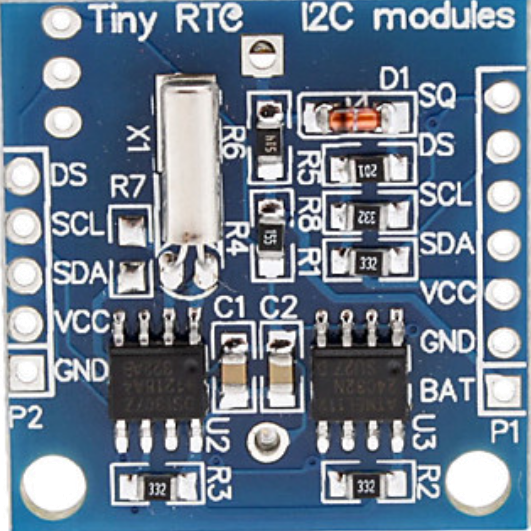
 Design with RTC DS1307 in Cirkit Designer
Design with RTC DS1307 in Cirkit DesignerIntroduction
The DS1307, manufactured by JJY (Part ID: RTC Module), is a real-time clock (RTC) chip designed to keep track of the current time and date. It communicates with microcontrollers using the I2C protocol and features a battery backup, ensuring that the time and date are maintained even during power outages. This makes it an essential component for time-sensitive applications.
Explore Projects Built with RTC DS1307
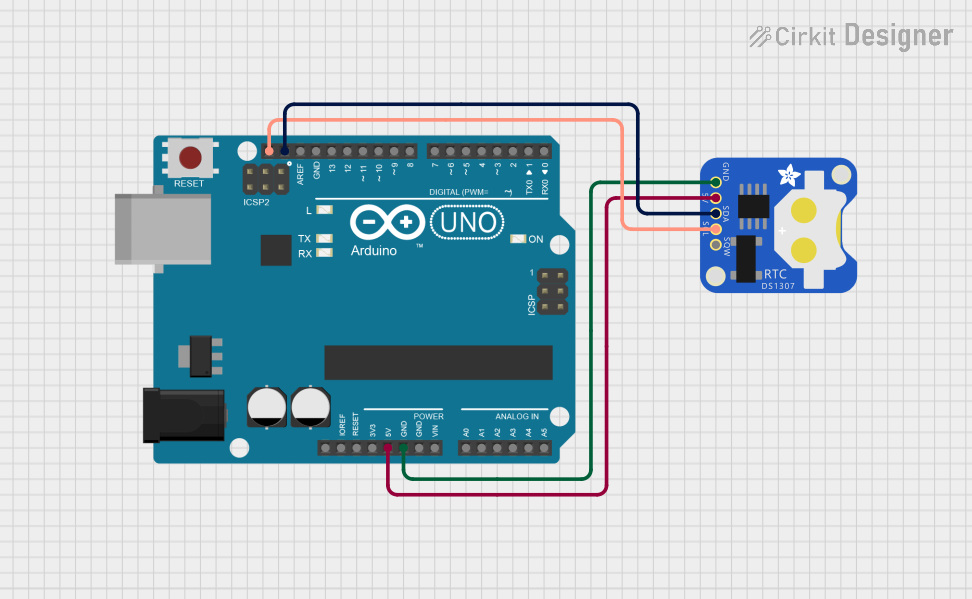
 Open Project in Cirkit Designer
Open Project in Cirkit Designer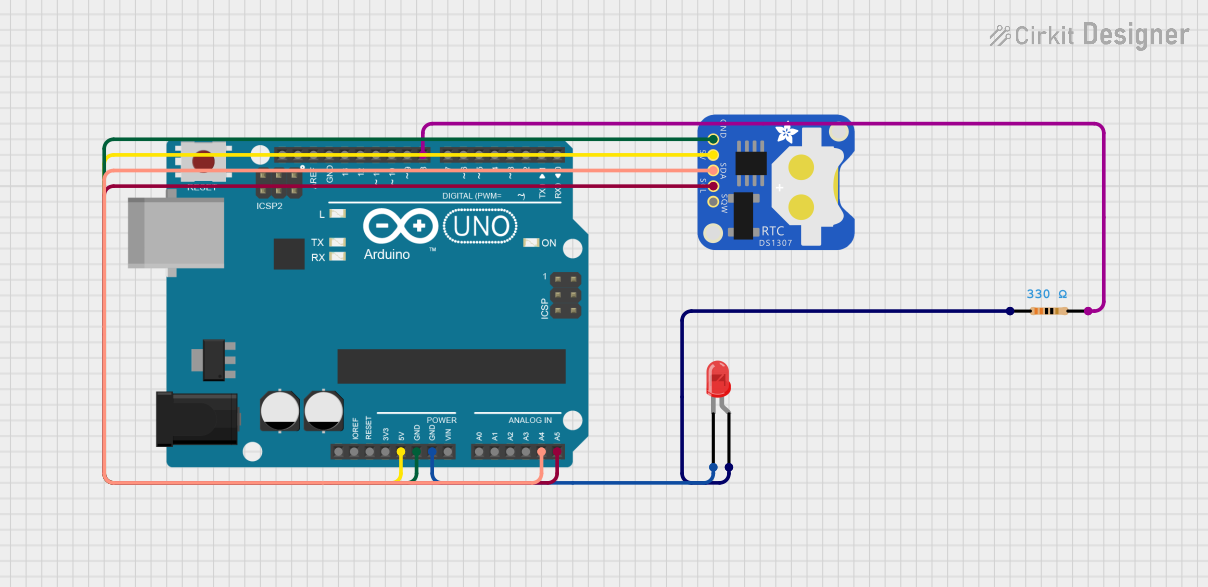
 Open Project in Cirkit Designer
Open Project in Cirkit Designer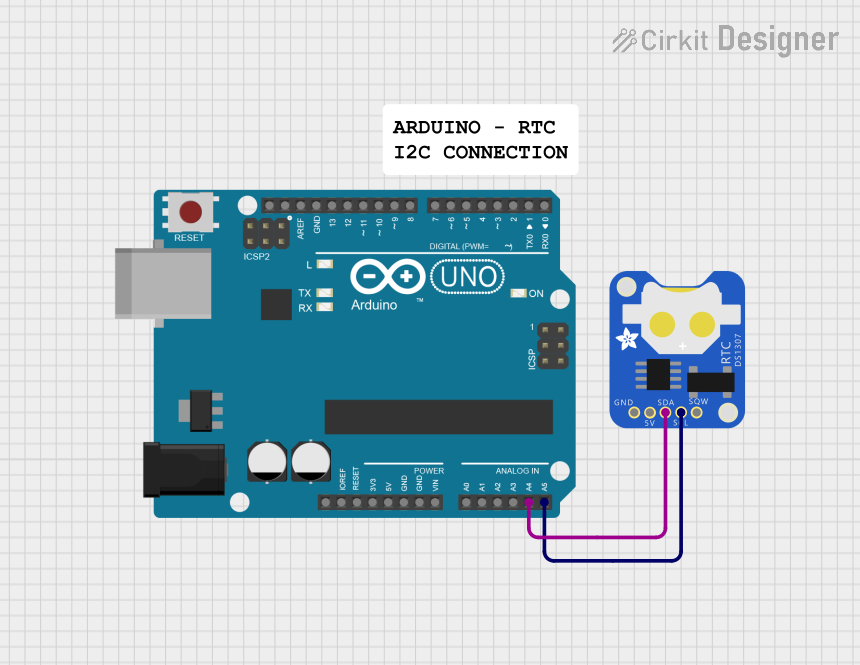
 Open Project in Cirkit Designer
Open Project in Cirkit Designer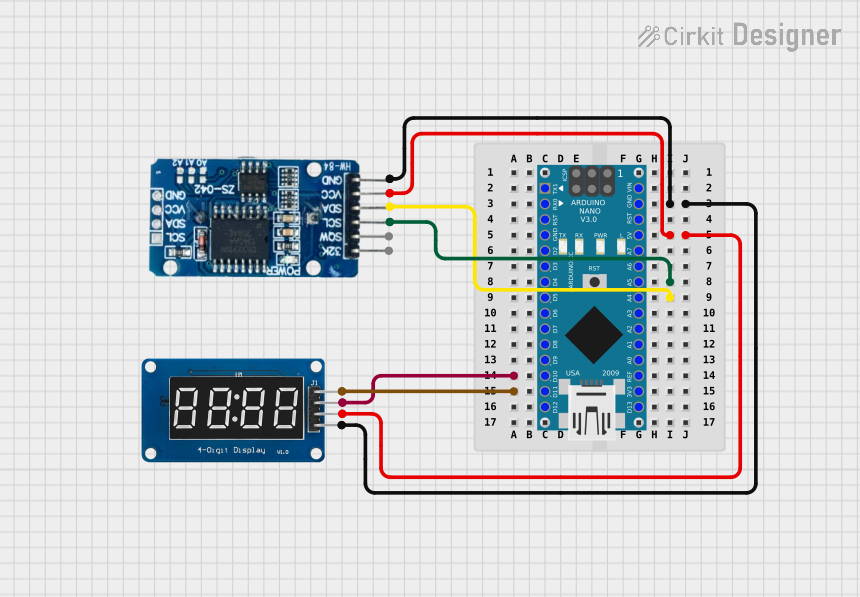
 Open Project in Cirkit Designer
Open Project in Cirkit DesignerExplore Projects Built with RTC DS1307

 Open Project in Cirkit Designer
Open Project in Cirkit Designer
 Open Project in Cirkit Designer
Open Project in Cirkit Designer
 Open Project in Cirkit Designer
Open Project in Cirkit Designer
 Open Project in Cirkit Designer
Open Project in Cirkit DesignerCommon Applications and Use Cases
- Digital clocks and timers
- Data logging systems
- Home automation systems
- Alarm systems
- Embedded systems requiring timekeeping functionality
Technical Specifications
The DS1307 RTC module is a versatile and reliable timekeeping solution. Below are its key technical specifications:
| Parameter | Value |
|---|---|
| Operating Voltage | 4.5V to 5.5V |
| Backup Battery Voltage | 3.0V (typical) |
| Communication Protocol | I2C (Inter-Integrated Circuit) |
| Timekeeping Accuracy | ±2 seconds/day (at 25°C) |
| Operating Temperature | -40°C to +85°C |
| Current Consumption | 1.5µA (with battery backup, typical) |
| Time Format | 12-hour or 24-hour format |
| Calendar Support | Automatic leap year compensation (up to 2100) |
| Memory | 56 bytes of non-volatile RAM |
Pin Configuration and Descriptions
The DS1307 RTC module typically has 8 pins. Below is the pinout and description:
| Pin | Name | Description |
|---|---|---|
| 1 | X1 | 32.768 kHz crystal oscillator input. Connect to an external crystal. |
| 2 | X2 | 32.768 kHz crystal oscillator output. Connect to an external crystal. |
| 3 | VBAT | Backup battery input. Connect to a 3V coin cell battery for power backup. |
| 4 | GND | Ground pin. Connect to the ground of the circuit. |
| 5 | SDA | Serial Data Line for I2C communication. |
| 6 | SCL | Serial Clock Line for I2C communication. |
| 7 | NC | Not connected. Leave this pin unconnected. |
| 8 | VCC | Power supply input. Connect to a 5V DC source. |
Usage Instructions
The DS1307 RTC module is straightforward to use in a circuit. Below are the steps and considerations for proper usage:
Connecting the DS1307 to a Microcontroller
- Power Supply: Connect the
VCCpin to a 5V power source and theGNDpin to the ground. - Backup Battery: Attach a 3V coin cell battery to the
VBATpin to ensure timekeeping during power outages. - I2C Communication:
- Connect the
SDApin to the microcontroller's I2C data line. - Connect the
SCLpin to the microcontroller's I2C clock line.
- Connect the
- Crystal Oscillator: Attach a 32.768 kHz crystal between the
X1andX2pins.
Important Considerations
- Use pull-up resistors (typically 4.7kΩ) on the
SDAandSCLlines for proper I2C communication. - Ensure the backup battery is installed correctly to maintain timekeeping during power loss.
- Avoid placing the module near high-frequency components to minimize interference with the crystal oscillator.
Example: Using DS1307 with Arduino UNO
Below is an example of how to interface the DS1307 RTC module with an Arduino UNO using the RTClib library.
Circuit Diagram
- Connect
VCCto the Arduino's 5V pin. - Connect
GNDto the Arduino's GND pin. - Connect
SDAto the Arduino's A4 pin. - Connect
SCLto the Arduino's A5 pin.
Arduino Code
#include <Wire.h>
#include <RTClib.h>
// Create an RTC_DS1307 object to interact with the DS1307 module
RTC_DS1307 rtc;
void setup() {
Serial.begin(9600); // Initialize serial communication at 9600 baud
Wire.begin(); // Initialize I2C communication
if (!rtc.begin()) {
// Check if the RTC module is connected
Serial.println("Couldn't find RTC");
while (1); // Halt the program if the RTC is not found
}
if (!rtc.isrunning()) {
// Check if the RTC is running and set the time if not
Serial.println("RTC is NOT running, setting the time...");
rtc.adjust(DateTime(F(__DATE__), F(__TIME__)));
// Sets the RTC to the date & time the sketch was compiled
}
}
void loop() {
DateTime now = rtc.now(); // Get the current date and time
// Print the current date and time to the serial monitor
Serial.print(now.year(), DEC);
Serial.print('/');
Serial.print(now.month(), DEC);
Serial.print('/');
Serial.print(now.day(), DEC);
Serial.print(" ");
Serial.print(now.hour(), DEC);
Serial.print(':');
Serial.print(now.minute(), DEC);
Serial.print(':');
Serial.print(now.second(), DEC);
Serial.println();
delay(1000); // Wait for 1 second before updating the time
}
Troubleshooting and FAQs
Common Issues and Solutions
RTC Not Detected by Microcontroller
- Cause: Incorrect I2C connections or missing pull-up resistors.
- Solution: Verify the
SDAandSCLconnections and ensure pull-up resistors are in place.
Time Resets After Power Loss
- Cause: Backup battery is not connected or is depleted.
- Solution: Check the
VBATconnection and replace the battery if necessary.
Inaccurate Timekeeping
- Cause: Faulty or improperly connected crystal oscillator.
- Solution: Ensure the 32.768 kHz crystal is securely connected to the
X1andX2pins.
Interference with I2C Communication
- Cause: Noise or interference from nearby components.
- Solution: Use shorter wires for I2C connections and avoid placing the module near high-frequency components.
FAQs
Q: Can the DS1307 operate without a backup battery?
A: Yes, but the time and date will reset whenever the main power is lost.
Q: What is the maximum length of the I2C bus for the DS1307?
A: The I2C bus length should typically not exceed 1 meter to ensure reliable communication.
Q: Can the DS1307 handle daylight saving time adjustments?
A: No, the DS1307 does not have built-in support for daylight saving time. Adjustments must be handled in software.
Q: Is the DS1307 compatible with 3.3V microcontrollers?
A: The DS1307 requires a 5V power supply, but its I2C lines can be level-shifted to work with 3.3V microcontrollers.